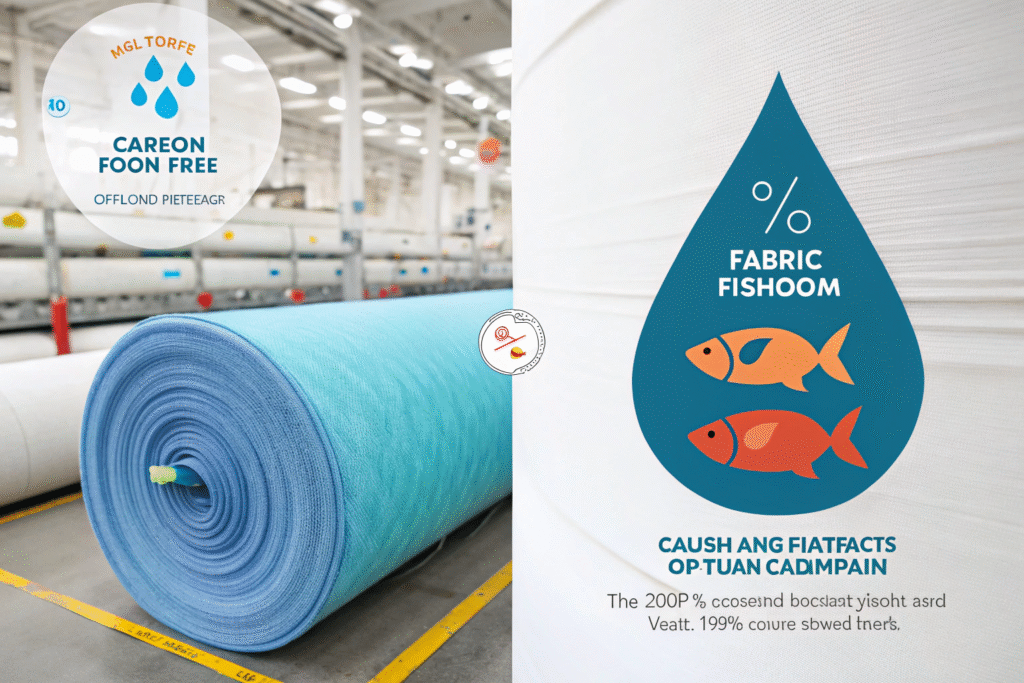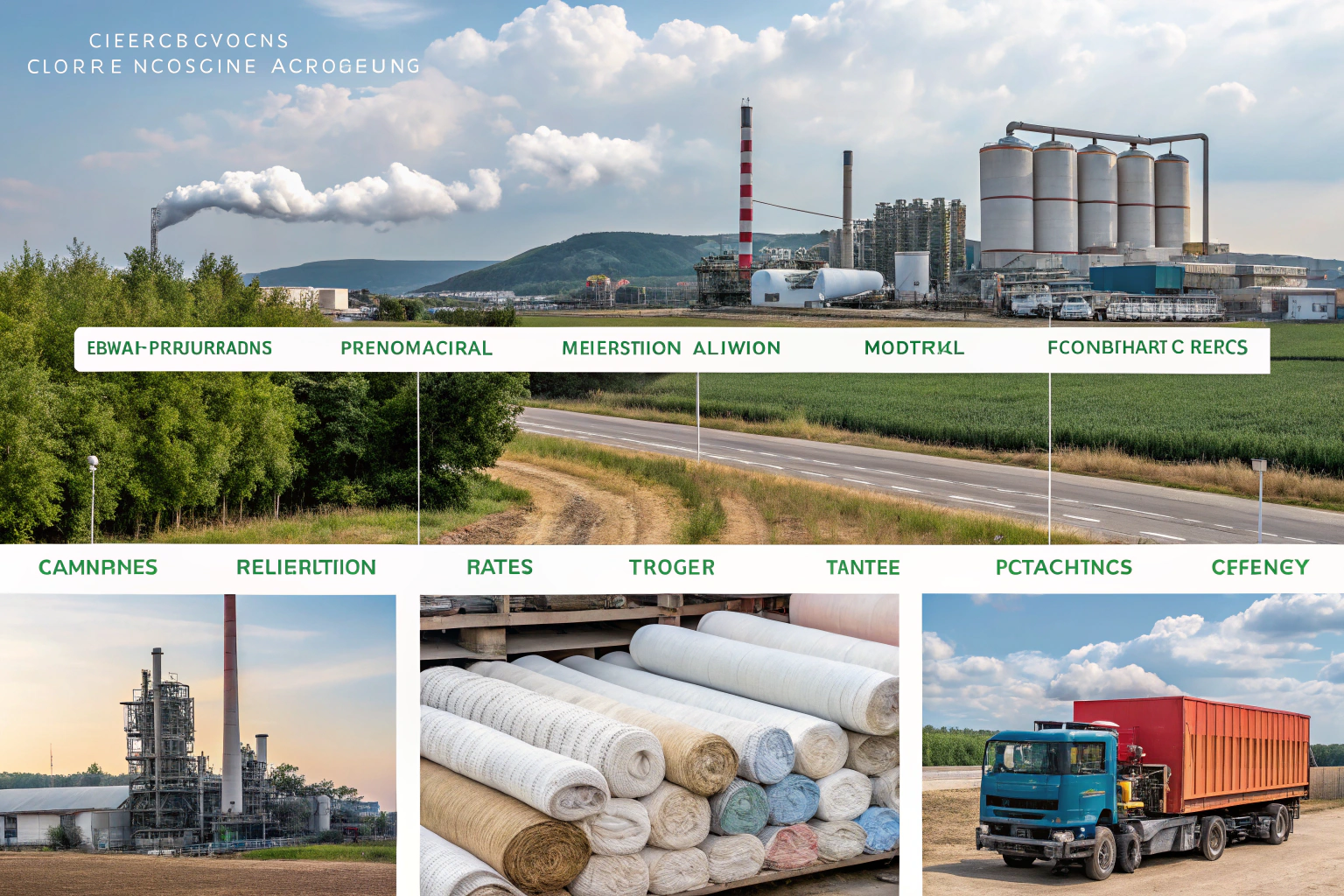As a fabric manufacturer with over twenty years of experience, I frequently work with clients who want to understand the complete environmental story behind their material choices. You aim to make responsible sourcing decisions, but the technical complexity can feel overwhelming. Conducting a Life Cycle Assessment (LCA) provides the definitive method to measure a textile's environmental footprint from origin to end-of-life. It delivers the verified data required to support sustainability claims and guide informed purchasing decisions.
A Life Cycle Assessment for textile materials is a structured, scientific approach that measures environmental impacts—including carbon emissions, water consumption, and energy usage—across every phase of a fabric's existence. This comprehensive analysis covers raw material extraction, fiber production, textile manufacturing, distribution, consumer use, and ultimate disposal or recycling. For fashion brands and manufacturers, executing an LCA is essential for identifying improvement opportunities, obtaining environmental certifications, and communicating honestly with increasingly eco-aware customers.
Grasping the LCA methodology enables you to select genuinely sustainable textiles and enhance your brand's environmental credibility. Let's examine this sophisticated process through a practical framework that you can immediately apply to your fabric sourcing strategy.
What are the fundamental stages of a textile LCA?
The LCA process follows an internationally standardized methodology that ensures comprehensive, consistent, and scientifically valid results. This structured approach guarantees that no critical aspect of environmental impact is overlooked, preventing incomplete conclusions and inaccurate reporting.

Why is establishing goal and scope definition crucial?
Before initiating data collection, you must precisely define your assessment's objectives and parameters. The goal and scope phase establishes the study's boundaries and purpose. Are you conducting the LCA to optimize internal manufacturing processes, qualify for sustainability certification, or make comparative claims between different textile options? This foundational stage dictates all subsequent assessment activities, and inadequate scope definition can compromise the entire study's validity for its intended application.
You must establish the Functional Unit, which quantifies the system's performance characteristics. For textiles, this typically involves "per square meter" or "per kilogram" of specific fabric. This standardized unit enables equitable comparisons between different materials. You must also define the System Boundary. Will you implement a "cradle-to-gate" assessment (covering raw material to manufacturing completion) or a "cradle-to-grave" assessment (incorporating consumer use and disposal phases)? For most apparel applications, cradle-to-grave assessment is necessary to capture the substantial environmental impacts associated with laundry care throughout the product's usable life. The International Organization for Standardization (ISO) provides the methodological framework for LCA through ISO 14040 and 14044 standards, which are essential for maintaining scientific rigor and industry acceptance.
What information comprises the Life Cycle Inventory analysis?
The Life Cycle Inventory (LCI) represents the comprehensive data foundation of your assessment, encompassing all input and output flows within your defined system boundaries. Conceptually, this phase involves creating an extensive spreadsheet documenting every resource consumed and emission generated throughout the product system. This stage is typically the most data-intensive and frequently the most resource-demanding aspect of LCA execution. For natural fibers like cotton, inputs would include irrigation water, agricultural chemicals, fertilizers, and energy for harvesting and processing. Outputs would incorporate greenhouse gas emissions, aqueous effluent, and solid waste streams.
Your LCI data quality directly determines your assessment's accuracy and reliability. You can utilize primary data collected directly from your value chain partners or secondary data from established LCA databases like Ecoinvent or the European Reference Life Cycle Database (ELCD). For example, when calculating the environmental footprint of our BAMSILK specialty fabric, we integrate primary data from our weaving and dyeing partners with secondary data for bamboo cultivation and pulp production. Contemporary LCA software platforms significantly streamline this data aggregation and management process, enhancing operational efficiency throughout the assessment lifecycle.
How should you select relevant impact categories for textiles?
Different environmental impacts hold varying significance across textile types. Selecting appropriate impact categories ensures your LCA addresses the most materially important environmental aspects associated with your specific fabric. This phase transforms raw inventory data into interpretable environmental effect indicators.

Why is Global Warming Potential assessment mandatory?
Global Warming Potential (GWP), quantified in kilograms of CO2 equivalent, represents the most widely recognized LCA metric. It measures the contribution of greenhouse gas emissions throughout your fabric's lifecycle to climate change. For synthetic fibers including polyester and nylon, GWP is predominantly influenced by energy-intensive petroleum extraction and polymer synthesis processes. For natural fibers, notable emissions frequently originate from agricultural machinery operation and nitrous oxide release from cultivated soils.
GWP tracking extends beyond environmental stewardship to business necessity. Fashion brands increasingly establish science-based targets for carbon footprint reduction, requiring reliable LCA data from their supply chain partners. Our CNAS-certified laboratory enables precise GWP tracking for our fabric portfolio, including our recycled polyester, which demonstrates substantially lower GWP than virgin equivalents by circumventing the initial energy-intensive petroleum extraction phase.
Which hydrologic impact categories are essential for textiles?
The textile industry faces significant scrutiny regarding water resource management. Two water-focused impact categories prove particularly critical: Water Scarcity and Eutrophication Potential. Water Scarcity measures the volume of freshwater consumed from water-scarce regions, making it especially relevant for water-intensive crops like cotton. Eutrophication Potential quantifies aquatic ecosystem nutrient enrichment from discharges containing nitrogen and phosphorus compounds from fertilizer application, potentially causing algal proliferation and oxygen depletion.
Consider this comparative analysis of common textile fibers:
| Fabric Type | Primary Water Impact | Dominant Impact Source |
|---|---|---|
| Conventional Cotton | Extreme Water Scarcity Impact | Agricultural irrigation requirements |
| Industrial Hemp | Moderate Water Scarcity Impact | Naturally rainfall-fed with minimal irrigation |
| Viscose/Rayon | Elevated Eutrophication Potential | Chemical processing from cellulose dissolution |
By concentrating on these categories, you enable evidence-based material selection. Choosing organic cotton or linen (flax), for instance, can substantially reduce the water scarcity and eutrophication impacts associated with your textile specifications.
What interpretation challenges commonly affect LCA outcomes?
The interpretation phase converts analytical results into actionable business intelligence. However, this critical stage presents numerous potential misinterpretation risks. Superficial result analysis can produce flawed strategic decisions and unintentional greenwashing allegations.

How can comparative LCA misinterpretation be avoided?
Comparing LCA results between different textiles offers tremendous value yet presents substantial interpretation risks. The most frequent error involves incompatible comparisons. You must verify that compared assessments share identical functional units, system boundaries, and data quality standards. Comparing cradle-to-gate results for one textile with cradle-to-grave results for another produces invalid conclusions, as the use phase (particularly laundering energy consumption) frequently dominates lifecycle impacts for many apparel textiles.
Product durability represents another crucial consideration. A robust, long-lasting textile may exhibit higher initial impact per unit area but significantly lower impact per wear over its service life. Always investigate beyond aggregated scores and examine the underlying methodological assumptions in any comparative analysis informing your sourcing strategy.
Why does methodological transparency ensure credibility?
An LCA without comprehensive transparency functions merely as a marketing instrument. When evaluating LCA data from suppliers like Fumao, you should inquire about methodological details. What specific system boundary was applied? Which databases were utilized? Were outcomes subjected to independent critical review? Transparent methodology builds stakeholder trust and validates your sustainability communications.
We implement this principle through detailed technical documentation for our sustainable fabric collections, including our Global Recycled Standard (GRS) certified recycled polyester. This enables our clients to confidently incorporate our environmental data into their product-level assessments and sustainability reporting. Opaque methodology should raise immediate concerns, as it often conceals unfavorable assumptions or data limitations that distort outcomes.
How can textile suppliers facilitate client LCA implementation?
You need not navigate LCA complexities independently. A technically proficient and transparent textile supplier serves as a valuable strategic partner, providing reliable data and specialized expertise to support efficient, confident decision-making.

Which supplier-provided documentation accelerates LCA completion?
Collaborate with suppliers who have预先 invested in environmental footprint quantification. Request Environmental Product Declarations (EPDs) and LCA reports for their primary fabric offerings. An Environmental Product Declaration (EPD) provides a standardized format for communicating verified LCA results, ensuring consistent presentation and interpretation. Access to these documents dramatically reduces the time and expense associated with conducting original, comprehensive LCAs.
Furthermore, innovative suppliers are integrating LCA metrics directly into product specifications. We are developing systems to deliver core LCA indicators—including GWP and water scarcity metrics—through QR code technology on fabric labels. This provides your design and sourcing teams with immediate access to critical environmental data during material selection and product development processes.
How does vertical integration enhance data reliability?
A supplier with vertically integrated manufacturing operations, like Fumao, maintains direct operational control and visibility across multiple production stages. We oversee weaving, dyeing, and finishing processes through owned and strategically partnered facilities. This operational control fundamentally transforms LCA data quality. Rather than depending on industry-average secondary data for these processes, we collect specific, primary data for energy consumption, water usage, and chemical applications from our manufacturing operations.
This integration level ensures that the LCA data we supply reflects our actual, optimized production systems rather than theoretical estimates. It enables us to provide accurate, reliable environmental footprints for your specific orders, supporting your development of increasingly sustainable and transparent supply chain systems.
Conclusion
Implementing Life Cycle Assessment for textile materials has evolved from academic exercise to essential business practice for organizations committed to authentic sustainability. Understanding the standardized four-phase framework—Goal and Scope Definition, Inventory Analysis, Impact Assessment, and Interpretation—enables you to demystify the methodology and apply it effectively within your sourcing operations. Focusing on materially relevant impact categories, particularly global warming and water resource impacts, while rigorously examining data transparency and comparability, yields maximum strategic value. Ultimately, LCA empowers your transition beyond ambiguous environmental claims toward brand reputation founded on verified, data-supported environmental stewardship.
Managing sustainable textile sourcing presents significant challenges, but requires no solitary effort. At Fumao Fabric, we partner with brands to deliver not only superior-quality, innovative textiles but also the transparency and environmental data essential for market success. We provide an extensive selection of certified sustainable materials, from recycled polyester to organic cotton, supported by LCA-verified environmental performance indicators. When prepared to develop your next apparel collection with a partner demonstrating both quality excellence and environmental accountability, please contact our Business Director, Elaine, to explore your requirements. Reach her at elaine@fumaoclothing.com to collaboratively advance sustainable textile innovation.










